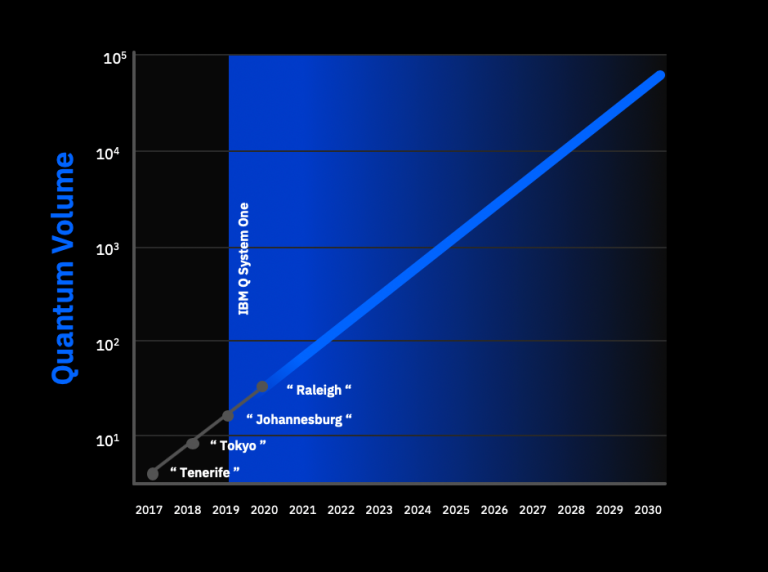 All qubits are not created equal.
All qubits are not created equal.
Over at the IBM Blog, Jerry Chow and Jay Gambetta write that the company’s new Raleigh 28-qubit quantum computer has achieved the company’s goal of doubling its Quantum Volume. The development marks a shift from experimentation towards building Quantum Computers with a systems approach.
As a hardware-agnostic metric, Quantum Volume measures the performance of a real quantum computer, accounting for both gate and measurement errors, device cross talk, as well as device connectivity and circuit compiler efficiency.
In theory, increasing Quantum Volume will allow quantum computers to solve more real-world, complex problems. The new Raleigh system has an improved hexagonal lattice connectivity structure with improved coherence that reduces gate errors and exposure to crosstalk.
Our achievement of QV 32 is significant, not just because it is another point on the curve, but because it confirms that quantum systems have matured into a new phase in which developmental improvements will drive better and better experimental quantum computing platforms to enable serious research, and bridge toward Quantum Advantage. The past year marked a number of remarkable achievements where we, as a community, solidly emerged into a new phase where quantum computing as a commercial business is not so far-fetched.
Chow and Gambetta go on to set this development in the context of Quantum progress in 2019:
- Multiple traditional cloud providers working towards quantum computing services
- Multiple 50-qubit systems that push the limits of what can be simulated
- Multiple physical backend systems, including trapped-ions and superconducting qubits
- Published quantum research from leading-edge Fortune 500 previously ‘non-quantum’ companies
Alongside this progress, it is also time for us to demonstrate a commensurate maturation out of a purely exploratory quantum research phase, and measure our progress within a roadmap culture for real systems. In the spirit of technological readiness, we must start thinking about quantum research and quantum systems development separately, but in sync with one another. Through a well-defined roadmap, we can observe and track generational progress in usable systems, and escape the myopia of trying to measure progress through isolated qubit experiments or lab demonstrations for glossy journals. While we were excited to see the improvements of our previous quantum systems along the roadmap, the path of our latest system reflects a new level of maturity.
According to IBM, their road forward will take a systems development mindset.
The next ten years will be the decade of quantum systems, and the emergence of a real hardware ecosystem that will provide the foundation for improving coherence, gates, stability, cryogenics components, integration, and packaging. Only with a systems development mindset will we as a community see quantum advantage in the 2020s.



